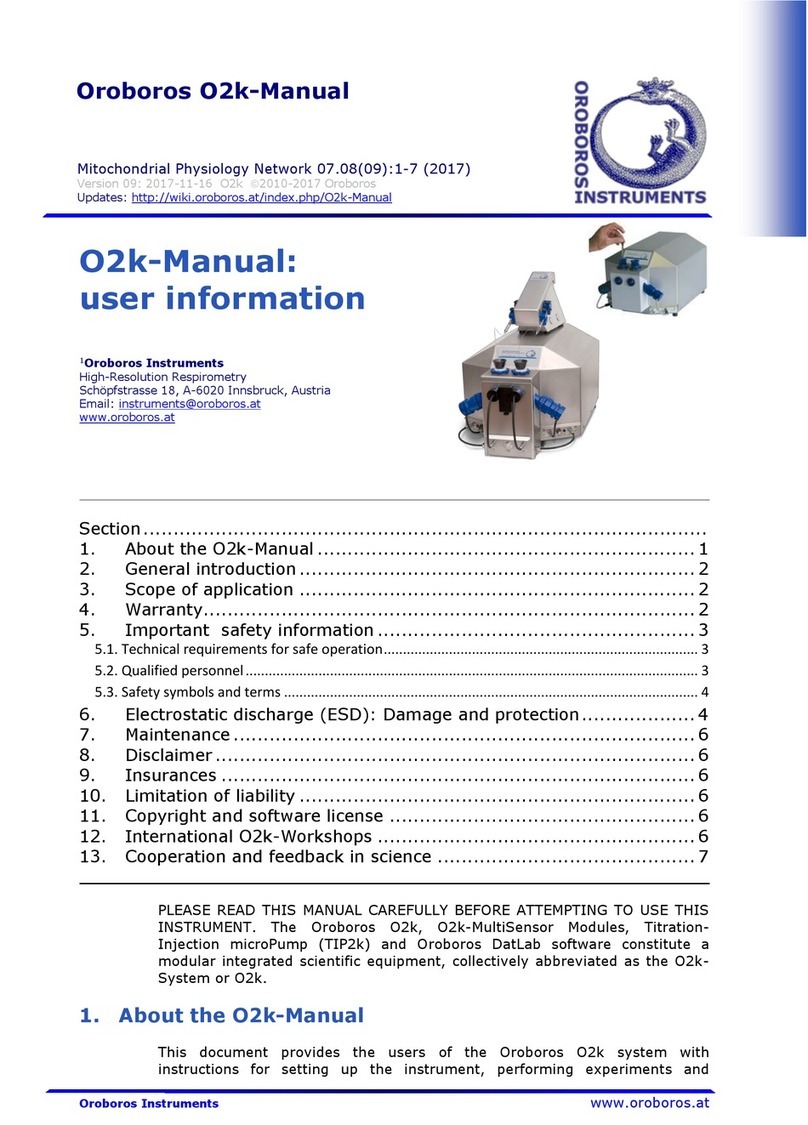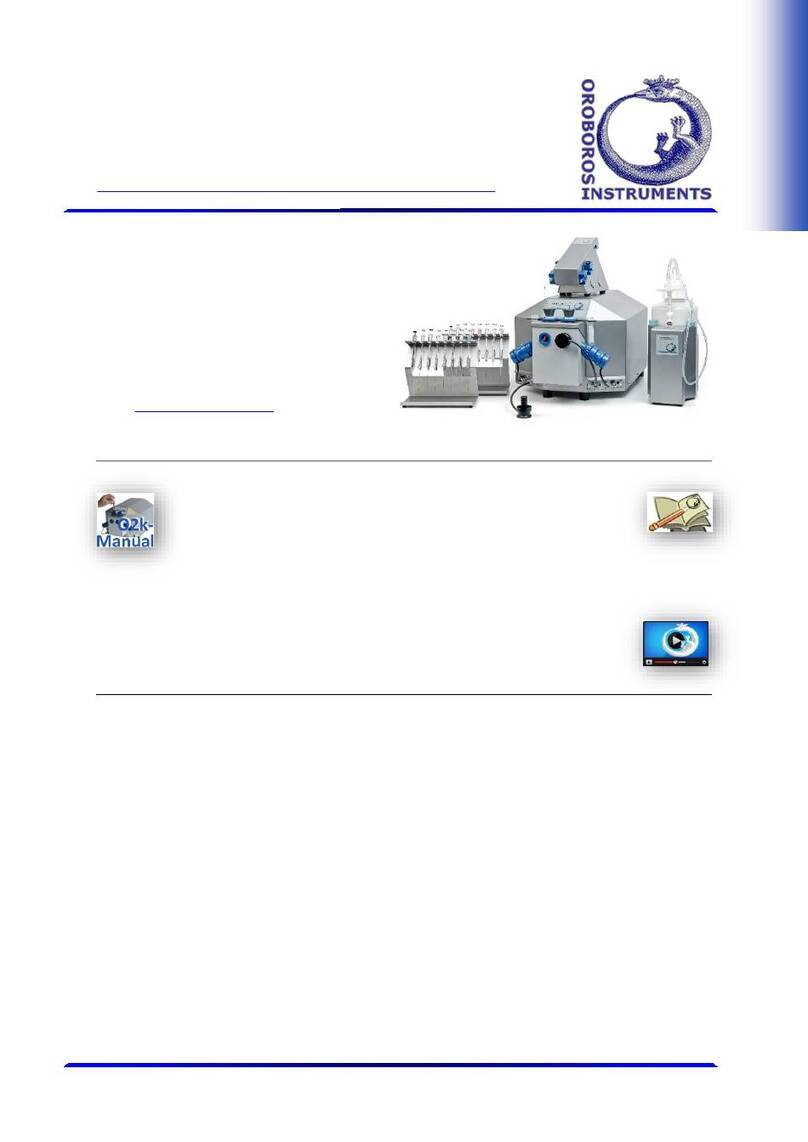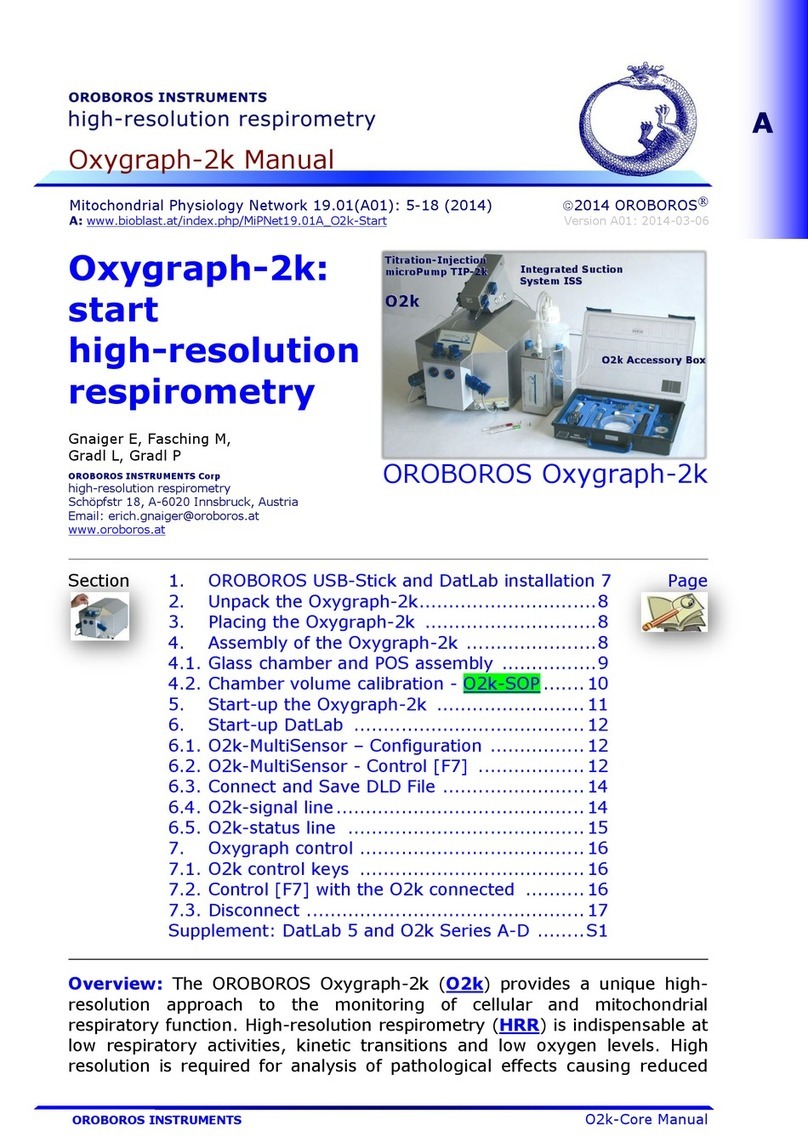
MiPNet19.18 B: OroboPOS service 22
OROBOROS INSTRUMENTS O2k –tested and trusted
evaporation of ethanol. Before an experiment, the ethanol is siphoned off
and the chamber is washed with distilled water (MiPNet06.03).
5.2. Short-term shelf storage
For shelf storage, unplug the POS connector from the O2k-Main Unit.
Clean the sealing tip and membrane with distilled water. Mount the POS to
the blue storage base and seal it with the Perspex cup to prevent the
drying out of the electrolyte. Store in the dark.
5.3. Long-term storage
For storage of the POS for several months, the sealing tip and membrane
are removed. Wash the electrolyte off the POS with distilled water. Even if
the membrane is not damaged, remove it by gripping the membrane
holding ring with the groove in the lower end of the membrane ring holder
of the OroboPOS-Mounting Tool (see above). The POS head is stored dry
and in the dark. Check for any moisture and salt contamination in the
electrical connector of the POS head. In case, wash with distilled water and
subsequently with pure methanol, dry at 60 oC for 24 h.
6. Replacement of the OroboPOS head
After cleaning and drying the gold cathode contact or drying the sensor
body at 60 °C for a few days, the zero current should be reduced. In
addition, the zero current of the bare cable, without sensor head
connected, is tested for any leak currents. If the latter test excludes any
sources of leak currents other than the POS, and POS service is not
successful, the sensor head must be replaced.
A new sensor head can be screwed onto the sensor connector, if the
old sensor head has been irreversibly damaged or should be replaced.
7. References
Gnaiger E (2008) Polarographic oxygen sensors, the oxygraph and
high-resolution respirometry to assess mitochondrial function. In:
Mitochondrial dysfunction in drug-induced toxicity (Dykens JA, Will Y
eds) John Wiley:327-52.»
Gnaiger E, Forstner H, eds (1983) Polarographic Oxygen Sensors.
Aquatic and Physiological Applications. Springer, Berlin, Heidelberg,
New York:370 pp. »
Hitchman ML (1983) Calibration and accuracy of polarographic oxygen
sensors. In: Polarographic oxygen sensors, Gnaiger E and Forstner H,
eds., Springer, Berlin, Heidelberg, New York:18-30. »
Hitchman ML, Gnaiger E (1983) A thermodynamic consideration of
permeability coefficients of membranes. In: Polarographic oxygen
sensors, Gnaiger E and Forstner H, eds., Springer, Berlin, Heidelberg,
New York:31-6. »
Updates »http://wiki.oroboros.at/index.php/MiPNet19.18B_POS-Service
»http://wiki.oroboros.at/index.php/MiPNet19.18A_O2k-Start
Next step –O2k-Core Manual D »MiPNet19.18D O2k-Calibration




























